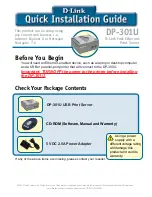
5038AD-I User's Manual
1-4
PC Health Monitoring
This section describes the PC health monitoring features of the board. All have an
onboard System Hardware Monitoring chip that supports PC health monitoring. An
onboard voltage monitor will scan these onboard voltages continuously: CPU core,
+3.3V, +5V, +/- 12V, +3.3V Stby, +5V Stby, VBAT, HT, Memory PCH Temperature,
System Temperature, and CPU Temperature. Once a voltage becomes unstable,
a warning is given, or an error message is sent to the screen. The user can adjust
the voltage thresholds to defi ne the sensitivity of the voltage monitor.
Fan Status Monitor with Firmware Control
PC health monitoring in the BIOS can check the RPM status of the cooling fans.
The onboard CPU and chassis fans are controlled by Thermal Management via SIO.
Environmental Temperature Control
The thermal control sensor monitors the CPU temperature in real time and will turn
on the thermal control fan whenever the CPU temperature exceeds a user-defi ned
threshold. The overheat circuitry runs independently from the CPU. Once the
thermal sensor detects that the CPU temperature is too high, it will automatically
turn on the thermal fans to prevent the CPU from overheating. The onboard chassis
thermal circuitry can monitor the overall system temperature and alert the user when
the chassis temperature is too high.
Note
: To avoid possible system overheating, please be sure to provide adequate
airfl ow to your system.
System Resource Alert
This feature is available when the system is used with SuperDoctor III in the
Windows OS environment or used with SuperDoctor II in Linux. SuperDoctor is used
to notify the user of certain system events. For example, you can also confi gure
SuperDoctor to provide you with warnings when the system temperature, CPU
temperatures, voltages and fan speeds go beyond predefi ned thresholds.
ACPI Features
ACPI stands for Advanced Configuration and Power Interface. The ACPI
specifi cation defi nes a fl exible and abstract hardware interface that provides a
standard way to integrate power management features throughout a PC system,
including its hardware, operating system and application software. This enables
the system to automatically turn on and off peripherals such as CD-ROMs, network
cards, hard disk drives and printers.
Summary of Contents for 5038AD-I
Page 1: ...5038AD I User s Manual Revision 1 0...
Page 5: ...v Preface Notes...
Page 10: ...Notes 5038AD I User s Manual x...
Page 18: ...5038AD I User s Manual 1 8 Notes...
Page 22: ...2 4 5038AD I User s Manual Notes...
Page 76: ...5 32 5038AD I User s Manual Notes...
Page 90: ...6 14 5038AD I User s Manual Notes...
Page 152: ...4 62 5038AD I User s Manual Notes...
Page 154: ...A 2 5038AD I User s Manual Notes...















































